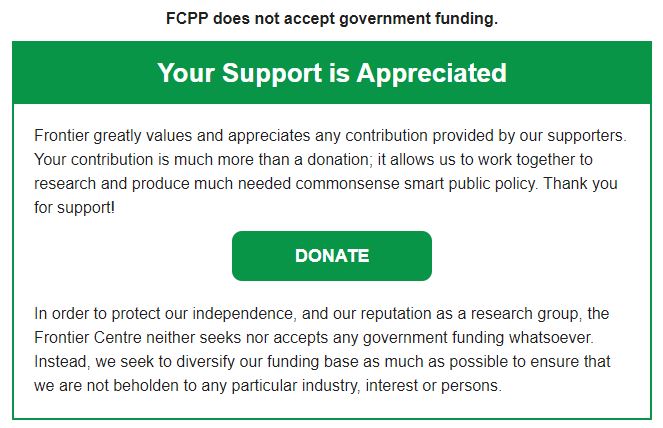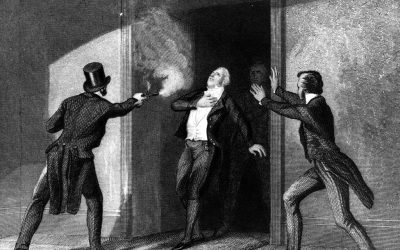Angus Reid Institute (ARI), the national not-for-profit, non-partisan public opinion research foundation just released part one of a two-part survey on Canadian’s perceptions of policing (Policing in Canada: Major study reveals four mindsets driving current opinions and future policy preferences).1 Conducted as an on-line survey, it canvassed responses from 5,005 Canadian adults who are members of the Angus Reid Forum. The survey was conducted between August 26 to September 1, 2020.
Policing has generally depended, almost exclusively, until very recently on analytics that focus on measuring performance primarily using data from police records – Uniform Crime Reporting (UCR) Survey.2
This reliance on “objective” measures prioritizes indicators such as the numbers of charges and arrests, or numbers of crimes, selected and categorized by the police themselves. Objective performance measures have been preferred because they generally require less interpretative analysis and more readily facilitate overall accountability for determining effectiveness, efficiency, and equity of policy inputs, outputs, and impacts. As a consequence, there has been much less focus on measuring citizens’ and community attitudes about service delivery based on subjective analysis.
Today, policy analysts have begun to raise questions about the extent to which the two analytical modes produce consistent or contradictory results – General Social Survey as compared to Uniform Crime Reporting.
Perhaps the most significant contribution of this survey is the focus it brings to the importance of determining community perceptions of their police, including subjective measures, beyond the traditionally relied on objective measures. There are, however, some limitations that should be considered.
This survey, unlike surveys of national policies, parties, or singular institutions, is about an aggregate of police services across Canada. Policing in Canada is administered on three levels: municipal, provincial, and federal. In 2018 there were 141 stand-alone municipal police services, 36 First Nations self-administered services, three provincial police services (Royal Newfoundland Constabulary, Ontario Provincial Police, and Sûreté du Québec), and the Royal Canadian Mounted Police.3
The survey acknowledges the fact that policing in Canada is oftentimes complex and that the relationships Canadians have with their police mirrors this complexity. This complexity, and separation and independence of police services, differing mandates, and separate jurisdictions over-policing policies, makes it even more important to interpret the survey results with caution.
Furthermore, the sample size used by the survey (5,005), all of whom are members of the Angus Reid Forum, further necessitates some caution. The survey does in fact issue this caution when summarizing results categorized by major cities.
The survey in most instances confirms what anecdotally, based on news reports, seems to have been the prevailing relationships between communities and their police services. Nonetheless, the results of the survey provide a useful guidepost for how Canadians perceive their police. The first instalment is divided into five parts, including surveys about:
- Views of police in Canada
- Interactions with Police
- Do police make Canadians feel more or less secure?
- Policing perspectives index
- Analysis of policing perspectives index
Each part drills into the perceptions of Canadians based on generational differences, provinces, urban and rural areas, age, contacts with police, and ethnicity.
The following is a summary of the survey. Wording and context are relevant and therefore, for reference, most the findings included herein have been taken directly from the survey.
Amongst its findings, three-quarters of those surveyed view the police in their community favourably, despite concerns about how officers may treat some demographics. For a similar number, 72 percent, local police are a source of pride. This includes two-thirds of Indigenous and visible minority respondents.4
According to the report, the majority of Canadian adults had at least one direct interaction with an officer over the past five years. Three out of five (58%) had between 1-5 direct interactions, and eight out of ten (80%) had more than 5 interactions over the past five years.5
Those older than 54 were far less likely to have had direct contact over the past five years, while three-quarters of 18-34 had had interactions with police. For most, this was a comfortable experience.6
Among those who have had direct interactions with police, one-in-three (36%) say this was an entirely positive experience. Just over two-in-five (44%) say it was more positive than negative, while one-in-five (21%) say that the experience was more negative or totally negative.7
Negative experiences vary by age, gender, and ethnicity. Indigenous respondents and those who identify as a visible minority are slightly more likely than Caucasians to hold an unfavourable view of their community police. The gap in opinion surfaces again when looking at these three groups across generations. In each of them, younger respondents are far more likely to view the police unfavourably. Indigenous respondents ages 35 to 54 are also more likely than others their age to feel this way.8
That said, the vast majority in all groups say they view the police favourably. This does not, however, mean that these same respondents do not think that there is a systemic issue with how police interact with members of minority groups, an issue to be examined in the second part of this series.9
This ratio of favourable to unfavourable views holds relatively constant across the country. No fewer than 73 percent of respondents in every region and province view their police favourably, though people in Newfoundland and Labrador, served by both the provincial force, the Royal Newfoundland Constabulary, and the federal RCMP, are most favourable towards their police (86%).10
Discontent is more evident when focusing on major cities. In many of Canada’s big cities: Metro Vancouver, Winnipeg, Greater Toronto, Montreal, and Halifax, favourability is lower and unfavourable views rise to one-quarter or higher.11
This trend toward lower favourability in urban centres is clearer when comparing directly to those Canadians who live in sparsely-populated areas. Urban Canadians are about 40 percent more likely to view police unfavourably than those in rural areas.12
The study also found that younger Canadians are less likely than their older peers to view the police positively. Those aged 18-24, on average, feel less secure when they see a police officer (38%) than more secure (32%), whereas this tendency is reversed in all older age groups.13
Similarly, more than one-in-three 18-24-year-olds (37%) view police in their own community unfavourably, compared to just one-in-ten (11%) among those 65 and up.14
On provincial differences, residents of Alberta and Saskatchewan lean the most towards warm perceptions of police, while Ontario has the highest proportion of those with a more negative view.15
Indigenous people and those who identify as visible minorities are more likely to feel less secure around and less favourable toward police compared to Caucasians, though the proportion who feel the opposite is still higher in each case.16
It is important to remind ourselves that the survey merely reports the results of its questions to the 5,005 participants; it does not draw inferences or causation. Perceptions and attitudes are not for instance compared to crime rates, the crime severity index, or socio-economic conditions.
The survey also develops an index based on responses that place Canadians into four groups – True Blue, Silent Supporters, Ambivalent Observers, and Defunders. The survey provides the demographic makeup of each group including broad demographic characteristics of each. The True Blue population comprises 26% of the population, Silent Supporters 26%, Ambivalent 22%, and Defunders 25 %.17
Those among the True Blue and Silent Supporters, tending to be older, wealthier, and more conservative, have had few poor experiences with a police officer. The Defunders, younger, urban, left-leaning Canadians, are far more divided.18
Two cautions here; first, the categorization may, for some, imply a judgement rather than just deliver the results. While True Blue, Silent Supporters, and Ambivalent Observers are arbitrary labels with no other relevance than the label itself, Defunders implies a categorization that is both controversial and ambiguous, in that defunding means different thing to different people and for many is associated with undefined, and sometimes extreme, views including the elimination of policing entirely. Perhaps True Blue as an expression of pro-policing and Pale Blue as an expression of dissatisfaction with policing may have been a better way to book-end this categorization.
Identifying and defining indicators, quantitative and qualitative, should be an iterative process specific to the nature and needs of each community. These indicators should serve as a standard for the tailoring of multi-stakeholder responses specific and unique to the needs of each community.19
For instance, the section that deals with how secure participants in each of the four categories feels when in police presence offers a valuable point for inquiry. It is interesting that 45% of those in the True Blue category feel more secure in the presence of police. Although on the face of it, this is a positive reflection on policing, it should be a concern that the result may also imply that this group is otherwise less secure in their daily lives when the police are not around.20 On the other hand, the 47% of those who felt less secure when the police are present are a reflection of the lack of police legitimacy with that group, whatever the underlying reasons. Such results should provoke further, more critical examination of the specific nature of communities.
The survey offers useful tools for demonstrating how such indicators, quantitative and qualitative, provide an opportunity for iterative process of developing responses, specific and unique, to the needs of each community.21
In the final analysis, this survey provides useful insight into the types of perceptions different categorizations of Canadians are likely to have of their police services. The use of the results of this survey to make broad generalizations about all Canadians, all police services, and all regions, however, should be viewed with caution. At best, the survey is a summary of a small group of Canadians who are members of the Angus Reid Forum, and therefore, any summary and interpretations should be limited to representing the perceptions of the “survey group” and not “Canadians generally”.
Anil Anand is a Research Associate with the Frontier Centre for Public Policy. Anil served as a police officer for 29 years; during his career some of his assignments included divisional officer, undercover narcotics officer, and intelligence officer. He has worked in Professional Standards, Business Intelligence, Corporate Communications, the Ipperwash Inquiry (judicial public inquiry), and Interpol.
[show_more more=”SeeEndnotes” less=”Close Endnotes”]
- “Policing in Canada: Major study reveals four mindsets driving current opinions and future policy preferences,” Angus Reid Institute, http://angusreid.org/policing-perspectives-canada-rcmp/,
- Police-reported crime statistics in Canada, 2018, Canadian Centre for Justice Statistics, https://www150.statcan.gc.ca/n1/pub/85-002-x/2019001/article/00013-eng.htm
- Conor, Patrici, Robson, Jodi, and Sharon Marcellus. “Police resources in Canada, 2018”
- “Policing in Canada: Major study reveals four mindsets driving current opinions and future policy preferences”, Angus Reid Institute, http://angusreid.org/policing-perspectives-canada-rcmp/
- Ibid.
- Ibid.
- Ibid.
- Ibid.
- Ibid.
- Ibid.
- Ibid.
- Ibid.
- Ibid.
- Ibid.
- Ibid.
- Ibid.
- Ibid.
- Ibid.
- Anil Anand, B. P. H. E. “Mending Broken Fences Policing: An Alternative Model for Policy Management.” Lulu.com, 2016.
- Ibid.
- Anil Anand, B. P. H. E. “Mending Broken Fences Policing: An Alternative Model for Policy Management.” Lulu.com, 2016.
[/show_more]



